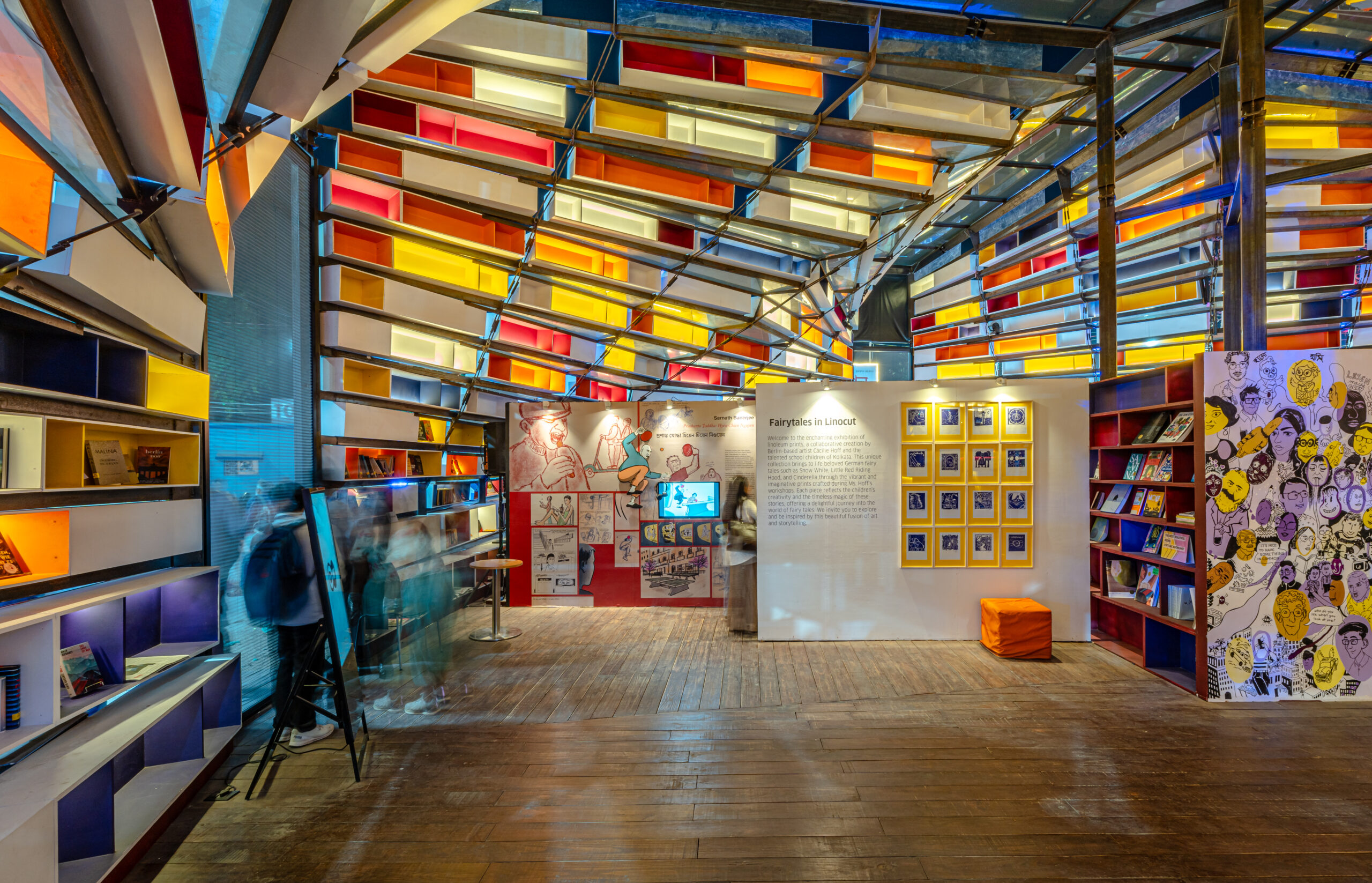
Boimela Prangan, Kolkata, India.
2025
Project Team: Anupama Kundoo, Shreshta Gopalakrishnan, Yashoda Joshi, Sonali Phadnis, Nishanti Srinivasan, Priyal Rajput, May Lange, Hitesh Kumar.
Structural design: Manjunath & Co.
Execution: Future Nirman and Team
With the support of Goethe-Institut
‘Shelf Life’ is a pavilion designed for the German Pavilion at the International Kolkata Book Fair, 2025. Its architecture is a celebration of the element of the bookshelf and its role in everyday life, as a backdrop against which learning happens. The design, an assembly of suspended book shelves, embodies the cultural reverence given to books, knowledge, and their role in shaping human civilization.
Recognising the prevalent local culture, the joy and enthusiasm of people’s direct action the pavilion is a useful social interaction infrastructure, that extends the shelf life of books. The German Pavilion offers itself as an abundance of book shelf spaces, beyond its own needs, to facilitate a free exchange of books between the book lovers of Kolkata.
The pavilion is built with a modular system of bookshelves, creating a structure that represents both the literal and metaphorical frameworks of knowledge. Four distinct clusters of these modules, lean inwards against each other as they rise, meeting at the top in a symbolic “plus” sign. This convergence represents the coming together of different fields of specific knowledge, illustrating that learning is supported and strengthened through interdisciplinary exchange.
Light plays a critical role in this architectural expression. Light is a physical necessity for reading but symbolically represents enlightenment and wisdom. Natural light filters down from the top as also from between the rows of bookshelves creating an interplay of spaces with a dynamic atmosphere.
The architecture of the bookshelves creates a lively “living” room space that invites dialogue, reflection, and intellectual exchange. The open plan encourages visitors to meander across a varying landscape of quiet reading areas, social interaction spaces as well a large congregation opportunities.
Despite the orthogonality of the basic bookshelf modules, the geometric rotation in their assembly liberates them from this rigidity through a light cable support system. The units on the ground serve as seating, those within arm’s reach serve as storage and book displays, and those higher up appear to be floating into the sky suggesting dreamy visions and imaginations that are the essence of human stories brought down to matter in books.
The pavilion incorporates into its design the idea of its afterlife, taking into consideration the utility of the materials used after the book fair closes. The shelves will be distributed across the city as needed social infrastructure, while the steel and glass will be recycled, thus extending the life of the materials, as suggested in the title ‘Shelf Life’.
Image credits: Subhajit Das
© Goethe-Institut Kolkata
Category:
Installations